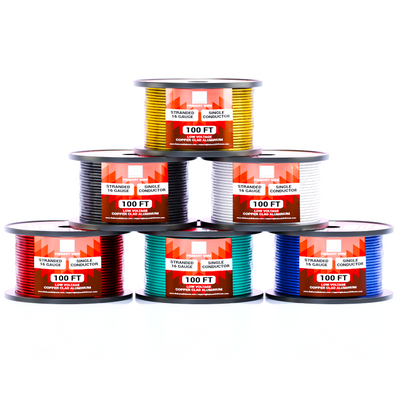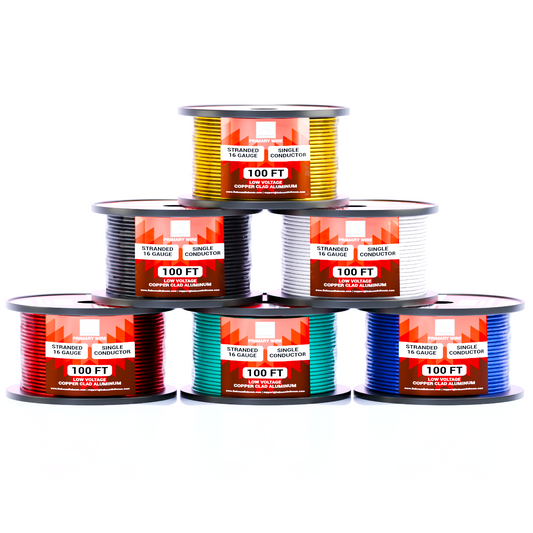
Understanding Signal-to-Noise Ratio (SNR) in Car Audio Systems
Share
Introduction
When building or upgrading a car audio system, you may come across a lot of technical terms. One of the most crucial, yet often misunderstood, is Signal-to-Noise Ratio (SNR). Understanding SNR is essential if you want to experience crystal-clear sound while cruising down the road. In this blog, we'll break down what SNR means, why it matters, and how it affects your overall listening experience. Whether you're a casual listener, a seasoned audio enthusiast, or a hardcore audiophile, mastering SNR knowledge will elevate your car audio game to an entirely new level.

What is Signal-to-Noise Ratio (SNR)?
Signal-to-Noise Ratio (SNR) refers to the level of the desired audio signal compared to the level of background noise. It's typically measured in decibels (dB). A higher SNR means a cleaner, clearer sound because the audio signal is much stronger than any unwanted noise. Think of it as ensuring your favorite music isn't being drowned out by static or hum.
For instance, if you're considering a new amplifier or head unit, checking the SNR rating can help you choose a better-performing device. In the world of car audio, an SNR of 90 dB or higher is considered excellent, while premium systems often aim for SNR ratings exceeding 100 dB to deliver truly impeccable sound reproduction.

Why SNR Matters in Car Audio Systems
SNR impacts everything from your favorite bass drops to the crispness of vocal tracks. A low SNR could mean hearing a subtle hiss, buzz, or hum, especially during quieter parts of a song. This distortion can ruin an otherwise perfect listening experience, making it hard to enjoy the dynamic range and subtleties of your music collection.
If you're investing in premium components like an advanced subwoofer system, ensuring a high SNR rating complements the rest of your setup. For more expert tips on system building, you might want to check out our Expert Software. Investing in high-quality components is only half the equation—ensuring that every piece works harmoniously to maintain a clean signal path is just as critical.

Factors That Affect SNR in Car Audio
Several factors can influence the SNR in your car audio system:
- Component Quality: Low-quality amplifiers, DACs, or head units can introduce extra noise, degrading sound purity.
- Installation Quality: Poor grounding, improper shielding, or bad wiring practices can significantly degrade SNR.
- Source Material: Low-bitrate music files naturally have more noise, and streaming audio might sometimes add compression artifacts.
- Environmental Interference: Electrical noise from your vehicle's engine or electronics can creep into your audio path.
At Baboom Baboom, we emphasize the importance of using high-quality CCA wires and solid installation techniques to minimize signal degradation. Additionally, brands like JL Audio and Rockford Fosgate, discussed in many audio forums, stress the value of meticulous installation and optimal grounding for maximizing SNR. It's not just about picking premium gear; it's about integrating it thoughtfully.

How to Improve SNR in Your Setup
Luckily, improving SNR is manageable with a few practical steps:
- Use Shielded Cables: Properly shielded cables reduce electromagnetic interference from vehicle electronics and outside signals.
- Choose High-Quality Equipment: Look for amplifiers, processors, and head units with high SNR ratings and proven noise reduction technologies.
- Professional Installation: Skilled installers know how to route wiring properly, isolate potential noise sources, and ensure tight connections.
- Use Ground Loop Isolators: If you experience persistent hum or buzz, a ground loop isolator might help.
- Optimize Signal Chain: Minimizing unnecessary conversions and keeping the signal path short and clean helps maintain a high SNR.
You can also visit our About Us page to learn more about how we advocate for best practices in audio system installations and component selection.

Common Myths About SNR
- "Higher SNR always means better sound." Not necessarily. After a certain point (around 100-110 dB), further improvements in SNR become virtually inaudible to the human ear under normal listening conditions.
- "Expensive gear guarantees great SNR." Even high-end equipment can underperform if installed poorly or if it interacts with other components badly.
- "Digital music files don't affect SNR." Lower-quality files (e.g., 128 kbps MP3s) can introduce compression artifacts and noise, lowering the overall perceived clarity.
- "Amplifiers are the only concern for SNR." Actually, every component in your chain—from your head unit to your DAC to your wiring—plays a role in maintaining a clean signal.
Learning to discern these myths will help you make smarter purchases and upgrades. Feel free to explore our growing list of Articles for more insights on how to build a well-rounded, high-performance audio system.

Conclusion
Understanding the Signal-to-Noise Ratio (SNR) is a game-changer for anyone serious about car audio systems. It directly affects how clean, clear, and powerful your music sounds. By investing in quality equipment, following sound installation practices, paying attention to every link in your audio chain, and staying informed about common pitfalls, you can maximize your audio system's potential and enjoyment.
If you crave deep bass without the hiss or want soaring vocals without crackling interference, then SNR should be a top consideration. A little knowledge goes a long way in ensuring that every drive becomes a concert experience inside your car.
Ready to upgrade your ride's audio experience? Explore premium wires, at Baboom Baboom. Got questions? Reach out through our Contact Page. Better sound is just one well-informed decision away!








